Tuesday Triage #66
- TUESDAY TRIAGE #66 by Vadim Drobinin
- On new horizons
- Things I enjoyed reading
- 1. Everybody’s Eating Like It’s the ’90s Again by Jaya Saxena
- 2. Time millionaires: meet the people pursuing the pleasure of leisure by Sirin Kale
- 3. How to Get Over Fear of Disappointing Others by @ndwignall
- 4. The Mind-Bending Math Behind Spot It!, the Beloved Family Card Game by @linrod
- 5. Between beriberi and very, very: In Praise of Useful Waste, Or, Tautological Compounds by Anatoly Liberman
- 6. I write code 100 hours/week, here's why I probably won't stop by @slimsag
- 7. The promise of pills that do nothing by Beryl Lieff Benderly
- 8. What to learn by @danluu
- 9. These weird Soviet devices cure diseases! by Eleonora Goldman
- 10. Writing In Public, Inside Your Company by @KoolAidCo
- Things I didn't know last Tuesday
- 1. Noble Rot
- 2. Candy corn
- 3. Kottabos
- 4. Mice don't like cheese
- 5. Charmat Method
- 6. Krupuk
- 7. Diglossia
- 8. Pluto Lamps
- 9. Individual Medley
- 10. Dancing plague of 1518
- Book of the week
- Thank you and see you in a week!
TUESDAY TRIAGE #66
by Vadim Drobinin ¶
Your weekly crème de la crème of the Internet is here!
19.10.2021 (read in browser)
-
Intro
Whatever is on my mind this week. -
Things I enjoyed reading
Ten-ish articles I found worth reading. -
Things I didn't know last Tuesday
Ten-ish facts I didn't know when I wrote the previous edition. -
Book of the week
Some thoughts on the latest book I've read.
On new horizons ¶
There is a new butchery nearby, and over the weekend we stopped by to pick up a piece of ribeye.
I ended up grabbing some thinly sliced picanha and razor clams as well. Neither are easy to come across here, and I haven't had a chance to cook them yet, so everything was very simple to maintain as much of the original flavours as possible.
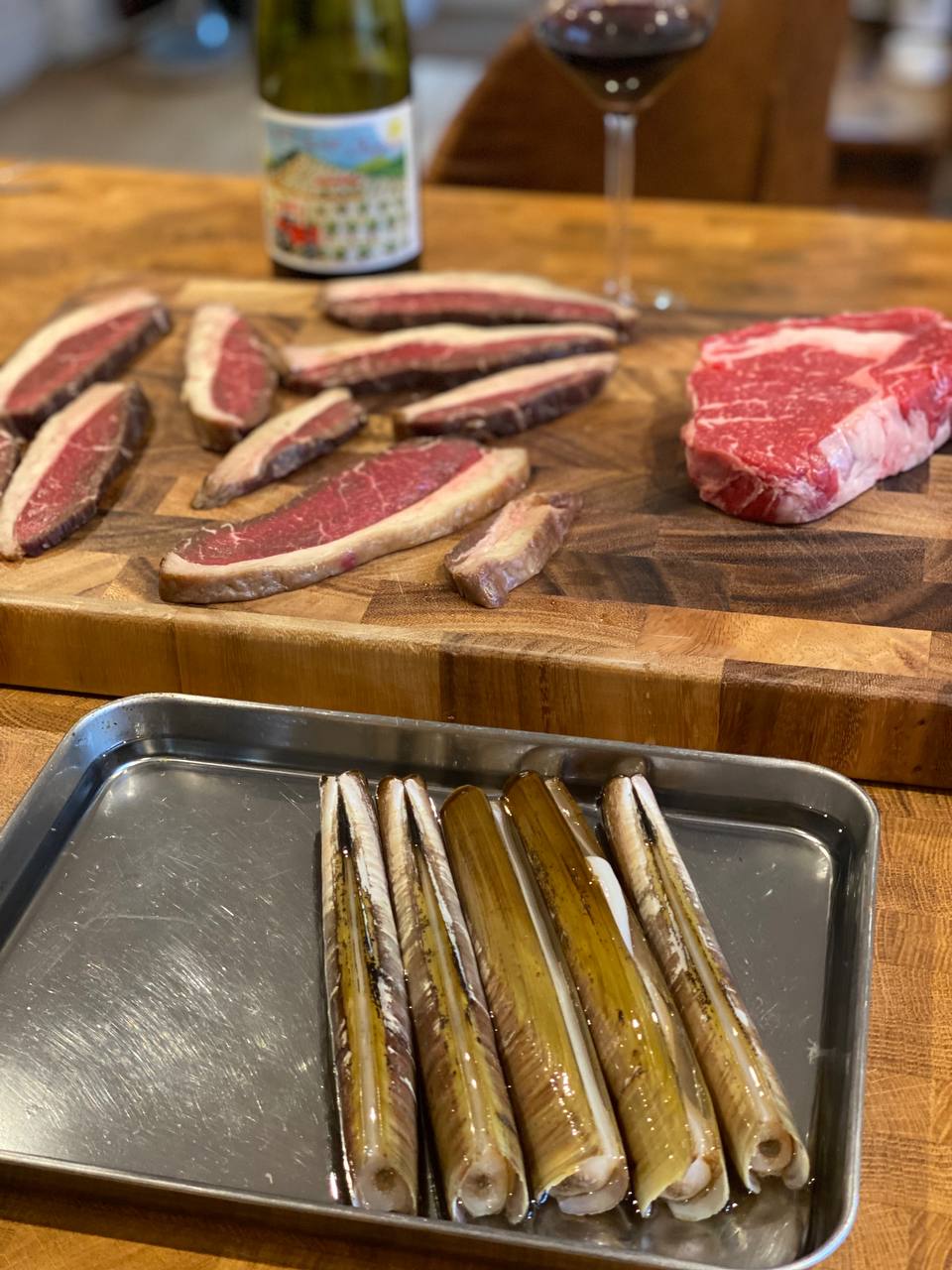
Clams were grilled and served with some flavoured butter, while steaks were just grilled over a direct heat with salt and pepper.
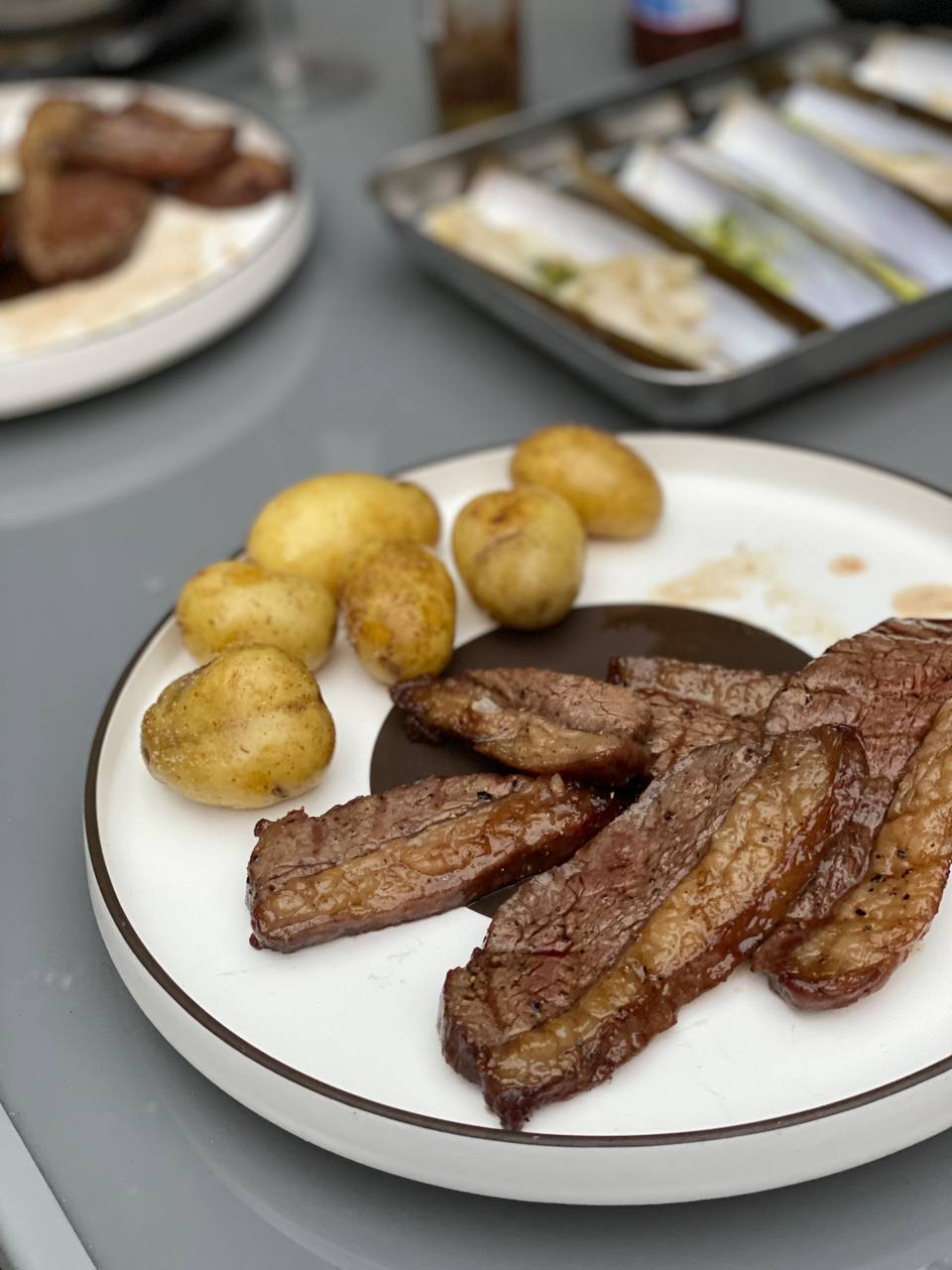
Also as this is the wine harvest season still, we've continued our adventures at a local winery.
First grape we've dealt with was Chardonnay, which came slightly earlier than it should have, so was destined to become sparkling wine.
The tank actually has some Bacchus from the previous week, fermenting as I write. The smell is quite funky by now, and it's advised not to breath in as there is a plenty of CO2 afloat: every year people die in their home wineries, as historically they usually build them in basements, and CO2 is heavier than air.
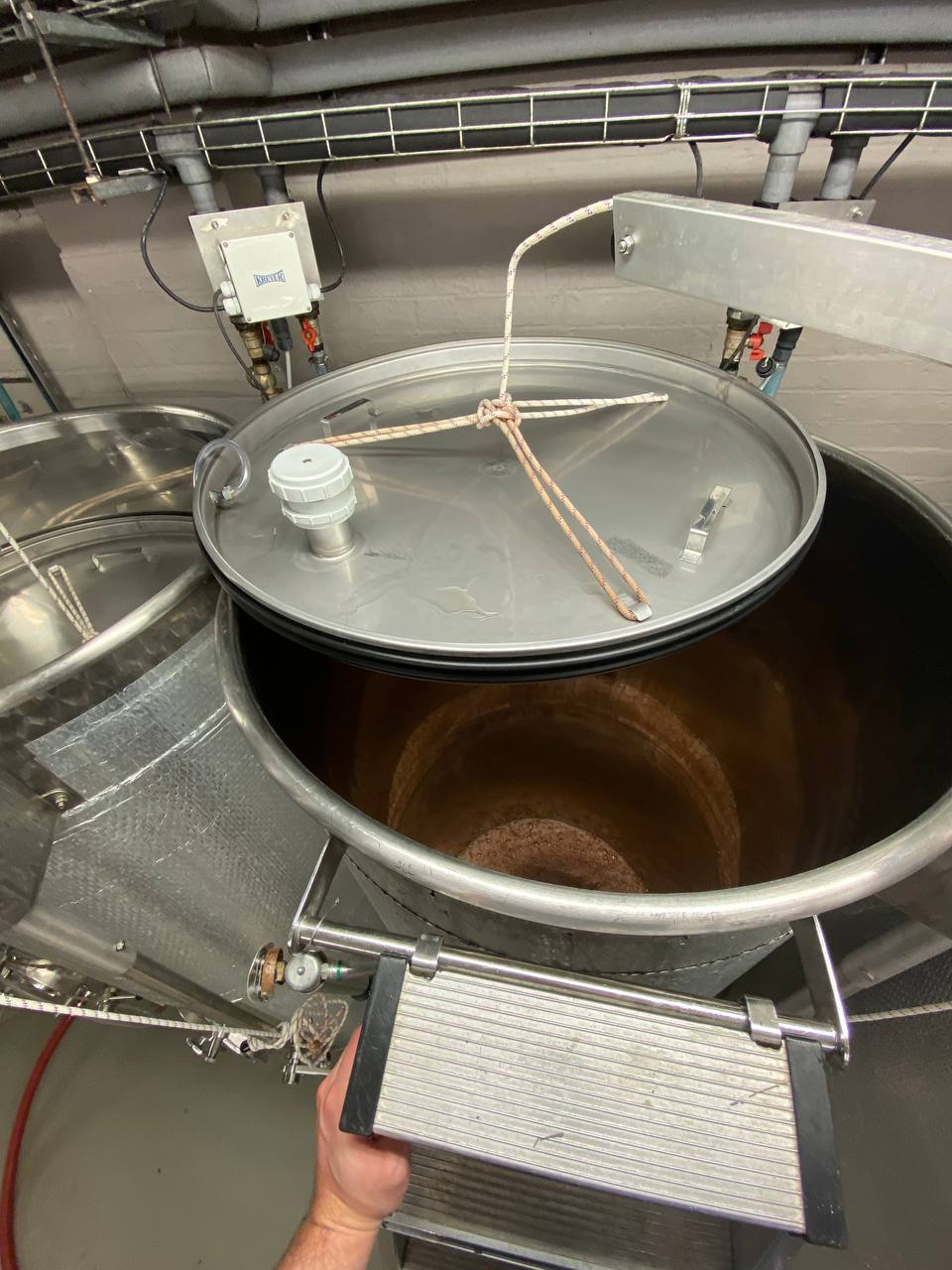
Chardonnay juice is extremely sour. I am not too picky, but after a few sample of this one I got to understand why winemakers tend to drink beer after work, and almost always spit everything out after sampling.

Also the sugar levels weren't particularly high: it's not a big deal for this wine style though, and sugar could always be added later.
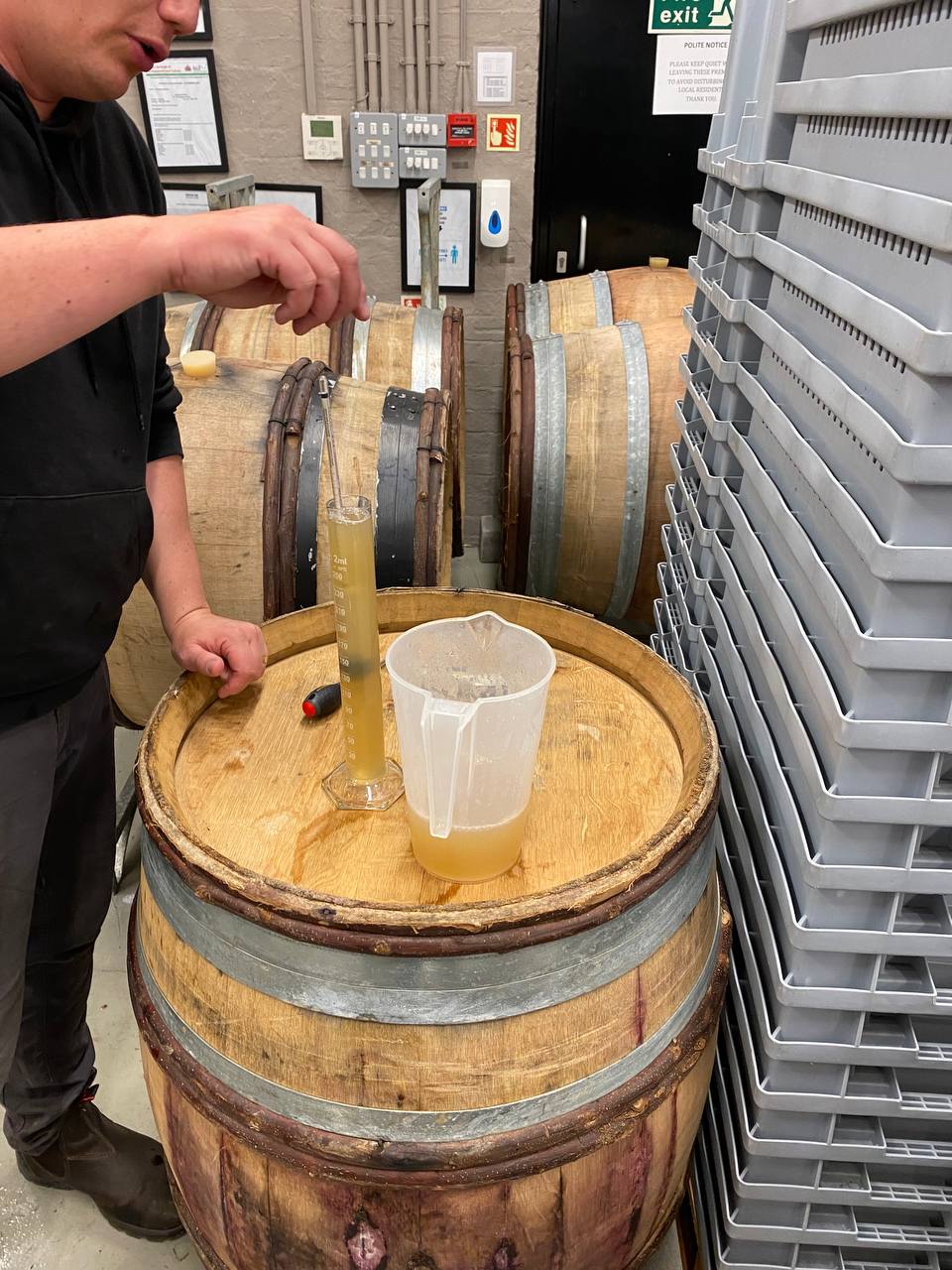
And earlier today we got to work with Reichensteiner grapes, which I don't remember trying before. They're quite high in sugars, so are more suitable for cooler climates, hence are mostly common in Germany.
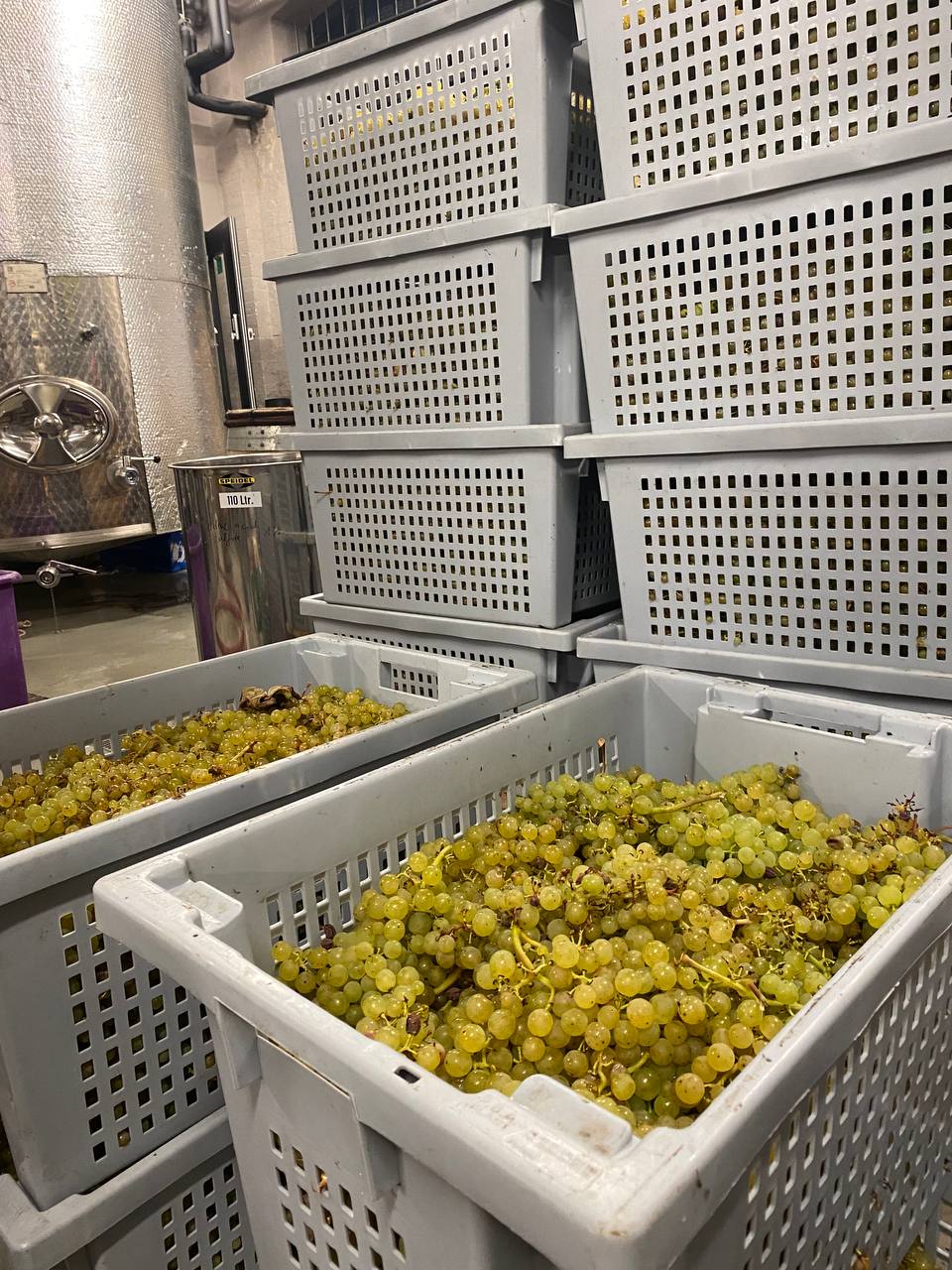
The flavours indeed are way stronger than in Chardonnay, but these ones to me felt overrippen a bit. Not a big deal, especially once mixed with the yeast which is the main tool in adding specific flavours (and as you can see there are lots of different types of yeast suitable for wine making).

We've also had some fun foot stomping the grapes "the old way" and then got to try some of the previous years from the same winery: back then they had to bring the fruit from Europe, and couldn't print grapes' names on bottles, so decided to use street names starting with the same letters. Syrah turned into "Sydney street" and Chardonnay into "Chancery Lane" (I used to work there for a few years!).

Guess what grape the Barbican is?
Things I enjoyed reading ¶
1. Everybody’s Eating Like It’s the ’90s Again by Jaya Saxena ¶
This article sent some chills up my spine, as despite noticing (and enjoying) the trends revival of balsamic reductions and Espresso Martinis, I am not in my 30s or 40s (yet).
However there is way more to it: people indeed return back to the recipes they loved thirty years ago. Classic cocktails were always popular, but the things common back then weren't really classic ones, just Tikis and Fizzes, and that's what is famous today.
There are two prongs of nostalgia at work here. One end is that these trends remind people in their 30s and 40s of things we enjoyed when we were younger. Remember when the hallmark of a fancy meal was something served with a balsamic vinegar reduction? Remember Dunkaroos? It’s as simple as being comforted by the flavors of our pasts, which we can use as a shared language, even as our knees start hurting more and we’re thinking about our mortgages. Kidding, of course. We could never afford to own our own homes, but we can afford snacks. It is plainly fun, if sometimes unnerving in a reminding-you-of-your-inevitable-mortality sort of way, to watch a new generation discover things that you have long cherished, or at least been aware of.
Might be the right time to dug out the cookbooks of your parents: who knows what's in there could become the next Michelin-starred dish.
2. Time millionaires: meet the people pursuing the pleasure of leisure by Sirin Kale ¶
Being able to convert money into time was one of the most mesmerising things I've ever observed.
It works even with simple things.
Paying for a more expensive hotel closer to places of interest pays back in not having to walk for a mile to the city center and back for a week of vacation.
Getting a more expensive flight in the middle of the day pays back with full night of sleep.
Gavin’s job is an unfortunate expediency that facilitates his enjoyment of the one thing that does matter to him in life: his time. “Life is short,” Gavin tells me. “I want to enjoy the time I have. We are not here for a long time. We are here for a good time.” And for now, Gavin is living the good life. He’s a time millionaire. “I am delighted,” Gavin tells me. “I could not be happier.” He is practically singing.
Some people apparently take it way further, and instead of trying to earn more money try to save more time. I don't think of it as a linear exchange though: sometimes money can buy exponentially more time (or significantly less, but that depends on many things) – maybe that's the difference between me and the millionaires.
3. How to Get Over Fear of Disappointing Others by @ndwignall ¶
The Fear of Missing Out is a famous one, but this one is probably as common. People are afraid of making others disappointed, whether it's by guitting their job or dressing how they want, and it causes lots of unhappines out there:
But we often end up mislabeling sadness or some other sadness-related emotion as guilt because however bad guilt feels, it gives us an illusion of control. When you’ve done something wrong, you can usually alleviate that feeling of guilt somewhat by making restitution.
Sadness, on the other hand, is the result of loss, which by definition means you’re helpless to actually do anything. So rather than experience the pain of helplessness, we label the feeling guilt because it makes us feel a little less helpless.
Personally I rarely feel guilt towards most people and apparently shouldn't take it for granted.
4. The Mind-Bending Math Behind Spot It!, the Beloved Family Card Game by @linrod ¶
Here is a fun story about a what looks like an even funnier game I've never played before.
In 1850, Kirkman submitted a puzzle to “The Ladies and Gentleman’s Diary,” an annual recreational mathematics magazine that took content from both amateurs and professional mathematicians. The question read, “Fifteen young ladies in a school walk out three abreast for seven days in succession: it is required to arrange them daily, so that no two shall walk twice abreast.” Kirkman’s Schoolgirl Problem, as it became known, was a question of combinatorics, a branch of logic that deals with combinations of objects under specified criteria. You’re probably more familiar with combinatorics than you might think—it’s the math principle that informs Sudoku grids.
Most card games in my childhood for based on the classic deck of cards (although for some reason we usually had only 36 of them), and were easily scalable, so any game could be played with two players and more (sometimes we'd mix a few decks together to have more people to participate).
5. Between beriberi and very, very: In Praise of Useful Waste, Or, Tautological Compounds by Anatoly Liberman ¶
I think I've seen examples of this tautology across multiple languages, or probably just assumed that it exists. The actual words are quite entertaining though: they make the languages feel like independent entities (which they actually are), which are constantly evolving and iterating.
Another word that I investigated was ragamuffin. Here the situation is more complex, but, in all likelihood, rag- is the first syllable of a name for the devil in many countries of Europe, while muff- “evil, ugly, detestable” (from French) is another name of the devil. The result is “devil-a-devil,” a word having the structure of cock-a-hoop or jack-a-napes. The name of the lizard slowworm should, if one of the proposed etymologies is right, be understood as “snake-snake.” Eventually, when the original meaning of ragamuffin and slowworm had been forgotten, people began to think that ragamuffins are ragged and slowworms are slow.
This is what I love about linguistics: instead of dealing with facts and logic it is more about being an explorer in the jungles, who is trying to help preserving rare but beautiful species here and there.
6. I write code 100 hours/week, here's why I probably won't stop by @slimsag ¶
I used to study at a uni and write code there, while also working a full-time job and writing code there too. In rare moments of nighttime clarity I'd write some smaller code to get better at writing code during the day.
It went well for a few years and then I realised that cooking and hanging out with friends is way more fun, so I never did it again.
This is analogous to how I feel: If I was working 100h/week at my day job, I would absolutely burn out. I think that’s what people hear when I say this. But that’s not what I’m doing: I work a regular programming day job like everyone else - it’s at a late-stage, fairly relaxed startup and with a good work/life balance. It’s just that I choose to spend the “life” part of that balance doing what I truly love: coding towards some serious aspirations.
However, there is no right or wrong here, and so many people could look at this differently: I really enjoyed the article for its honesty. If someone were to ask me about being an engineer during a day and then coding during the night, I'd probably point them here.
7. The promise of pills that do nothing by Beryl Lieff Benderly ¶
A curious collection of thoughts from different researches on how placebo work and how they are used and abused by doctors all other the world:
A growing body of evidence shows that placebo effects associated with reduction in pain can allow people to reduce consumption of opioid drugs. Placebos have also proven able to alleviate symptoms of Parkinson’s disease, irritable bowel syndrome, traumatic brain injury, several psychiatric disorders, and other conditions. The research consensus has moved far beyond earlier views of the placebo effect as merely a bothersome source of experimental bias that can distort trial results.
I suspect that quite a few pills I had in my childhood, whether it was against stomach achу or flu, didn't do much except putting my mind at easy, and it actually helped fixing the problem.
8. What to learn by @danluu ¶
A great essay on learning right things: despite being taught to focus on very specific subjects, we rarely end up doing them exclusively. As the author highlights, most of these skills get merged and blended together into a few more generic techniques we apply more or less often.
One thing that's worth noting is that skills don't have to be things people would consider fields of study or discrete techniques. For the past three years, the main skill I've been applying and improving is something you might call "looking at data"; the term is in quotes because I don't know of a good term for it. I don't think it's what most people would think of as "statistics", in that I don't often need to do anything as sophisticated as logistic regression, let alone actually sophisticated. Perhaps one could argue that this is something data scientists do, but if I look at what I do vs. what data scientists we hire do as well as what we screen for in data scientist interviews, we don't appear to want to hire data scientists with the skill I've been working on nor do they do what I'm doing (this is a long enough topic that I might turn it into its own post at some point).
It makes learning new both harder and easier: harder, because spotting the right thing to learn requires either lots of effort or experienvem and easier because with enough practice you get to do pretty much anything you know.
9. These weird Soviet devices cure diseases! by Eleonora Goldman ¶
I was born after the Soviets fell, but this article (and pictures inside) describe my childhood exposure to medical specialists very well.
Ultraviolet rays were also used for local radiation. The Solnyshko (“Little sun”) device was the main way to fight colds and viruses among kids. It had nozzles for throats, noses and ears. The devices were designed to warm up one, two or four children at the same time and it was possible to use different types of nozzles for each.
“When I was sick, I was taken to this device in the polyclinic. I paid attention to the specific smell in the mouth after it,” an Internet user wrote. It smelled of ionized air.
In fact, I'd have something akin this device whenever we had a flu season, and while I don't remember how often it actually cured something, I still can recall the smell of the air after the session.
10. Writing In Public, Inside Your Company by @KoolAidCo ¶
A really dwetailed guide about notes we could write: from personal notebooks to company-wide documentation.
Writing shows up within a company in two primary ways: papertrails and curations. Papertrails are documented accounts of what happened, typically produced in the run of work while it’s happening. Meeting notes are the most obvious example. Curations are artifacts of work produced to contribute to the system of shared knowledge. These are typically editorialized summaries of work that has already happened or an outlook on work that will happen soon. The audience for curations is those who might not naturally encounter the work, but might benefit from knowing or understanding more about it. A 6-Page Narrative at Amazon would fall into this bucket.
I don't write as much as I'd like: although I also enjoy coding, and then the most of all I enjoy spending time doing pretty much anything else, so there is rarely any time for making more notes. At least there is this newsletter.
Things I didn't know last Tuesday ¶
1. Noble Rot ¶
While dealing with wine I learn something new pretty much every day, but this one is especially interesting.
"Noble Rot’ causes grapes to dehydrate while maintaining the sugar levels. More wine grapes are needed to make the same amount of juice and thus the juice has higher sugar content. Dessert wines made from Noble Rot grapes are more viscous and sweeter, some even have higher alcohol content.

In most case this is not a good thing, as plain sugar is easy to add anyway, but sometimes it changes the wine for the better (in all other cases it oxidizes it very fast).
2. Candy corn ¶
Another sweets I didn't know about.
Candy corn is a type of small, pentagonal pyramid-shaped candy, typically divided into three sections of different colors, with a waxy texture and a flavor based on honey, sugar, butter, and vanilla.

They look pretty cool, but I am wondering how practical it is to make such a shape instead of just rolling them into a ball and then slicing).
3. Kottabos ¶
Here is an idea for your next drinking games party (if people still do them out there, obviously):
Kottabos (Ancient Greek: κότταβος) was a game of skill played at Ancient Greek and Etruscan symposia (drinking parties), especially in the 6th and 5th centuries BC. It involved flinging wine-lees (sediment) at a target in the middle of the room. The winner would receive a prize, comprising cakes, sweetmeats, or kisses.
Note that they weren't throwing full glasses, only the ones with a sediment, that's really important.

4. Mice don't like cheese ¶
I still don't fully believe that, but seems like evertything (including Tom & Jerry) is a lie: mice prefer fruits and sweets over cheese.
Contrary to popular belief, mice really aren't all that crazy about cheese. Sure, they might eat it if there's nothing else around -- a hungry mouse can't be too picky -- but it's far from his favorite food.
One theory is that people used to store dried meats in cheese in their pantries a lot, and that's there myth came from. Also cheese seems to be bad for mice health.
5. Charmat Method ¶
A very straightforward way to make sparkling wine: instead of letting it to undergo a second fermentation in a bottle, winemakers carbonate everything altogether in a tank. The resulting wine is pretty much the same, but not as classy, hence the separate name.
The Charmat method is a sparkling winemaking process that traps bubbles in wine via carbonation in large steel tanks. This technique is also called metodo Italiano, the Marinotti method, the tank method, or cuve close (“sealed tank,” from the French cuvée, or vat).
Wines do have mentions of the style on bottles, so these days it is easier to tell a fancy Champagne from some not-so-fancy UK wine by the way it was produced, although I personally don't mind the freshness it adds up to the bottle.
6. Krupuk ¶
A clever way to make paffed pieces of dough: get them compresed and then occasionallly deep fry.
To achieve maximum crunchiness, most of this pre-packed raw krupuk must be sun-dried first before being deep fried at home. To cook krupuk, a wok with plenty of high-temperature cooking oil is needed. A healthier, fatless version might be made by briefly pulsing the raw krupuk in the microwave oven: usually one minute at the medium (~700W) power is enough to successfully puff a handful of chips. Raw krupuk is quite small, hard, and darker in color than the cooked one.
This sounds way easier than most of deep fried bread recipes, by the way. Also it stores pretty much infinitely.

7. Diglossia ¶
Continuing with odd linguistic trivia, there as a name for concatenating words from different languages into a single word with a new meaning.
In linguistics, diglossia is a situation in which two dialects or languages are used (in fairly strict compartmentalization) by a single language community.
For example, bonjour falaykum instead of bonjour or assalamu falaykum.
8. Pluto Lamps ¶
Imagine the Victorian gas lamps that sold cups of hot coffee:
That lamp is described as being filled with Welshbach mantles on a Denayrouze burner and able to draw of quarts of water in quick succession. From other slots could be obtained hot coffee, coca and fluid beef via enamel vessels secured to the gas lamp by a chain.

How come no one makes them anymore? So much better than vending machines.
9. Individual Medley ¶
I didn't hear about this training approach to swimming before:
Individual medley consists of a single swimmer swimming equal distances of four different strokes within one race.
I did the sets of different strokes though, so probably that still counts, but as far as I know there is no dedicated word in Russian for it.
10. Dancing plague of 1518 ¶
From the collection of historical events I struggle to believe into:
The dancing plague of 1518, or dance epidemic of 1518, was a case of dancing mania that occurred in Strasbourg, Alsace (modern-day France), in the Holy Roman Empire from July 1518 to September 1518. Somewhere between 50 and 400 people took to dancing for days.
The scientific versions of what happened are quite hilarious, and include pretty much anything, from a food poisoning to some fumes.
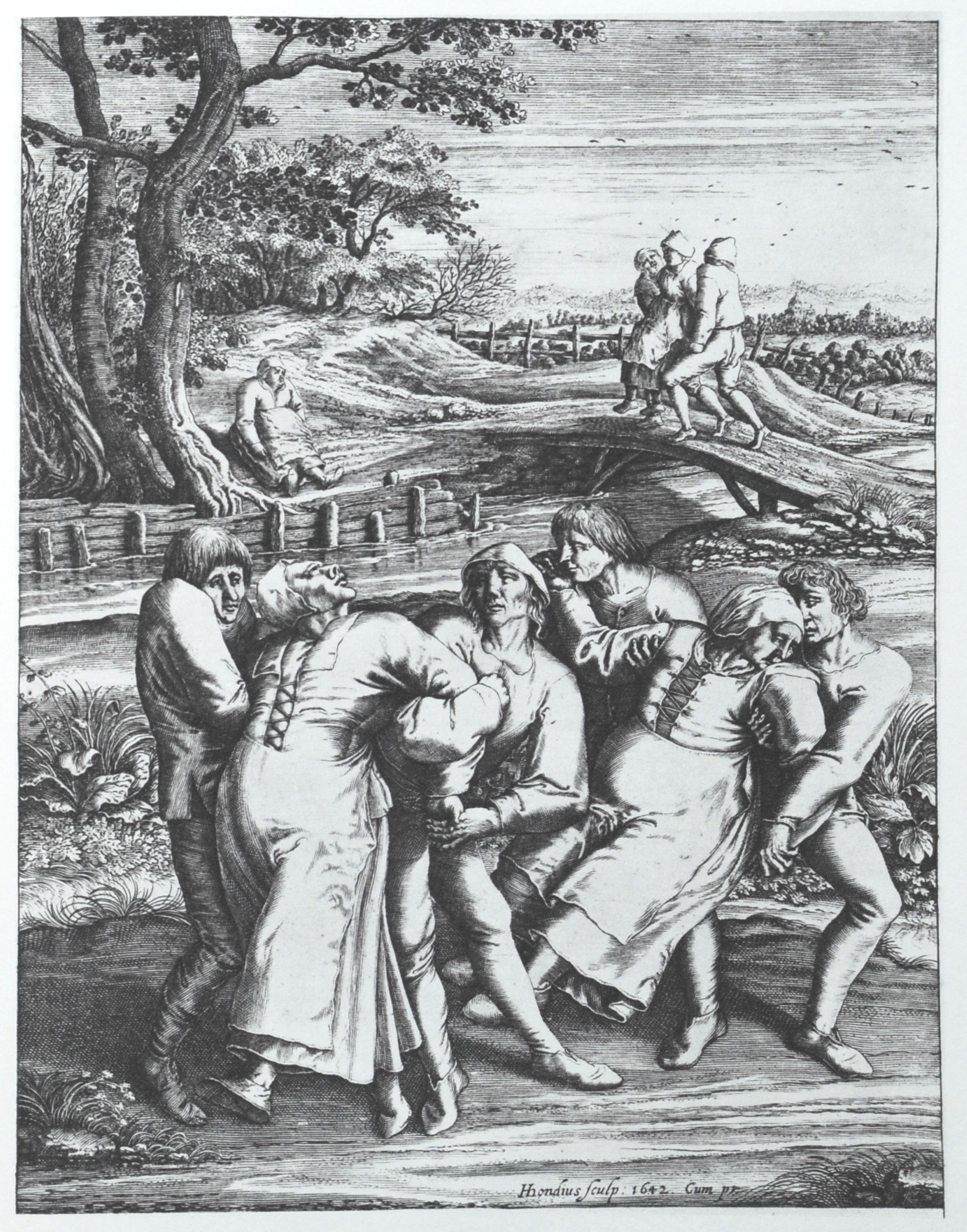
Book of the week ¶
This book looked like a typical cookbook, but I gave it a chance anyway, and Tom Colicchio's Think like a Chef didn't disappoint:
The quality differential between mass-produced vinegars and artisanal vinegars, for example, is apparent at first taste: It is the difference between harsh, acerbic notes and carefully nuanced, balanced acidity. The same holds true for small producers of olive oil, who invest time, money, and expertise in growing premium fruit and producing tiny batches. The resulting flavors and bouquet can, quite literally, transform a dish.
This is especially true with vegetables. When choosing vegetables, think like an Italian peasant: Even an Italian of the most modest means will spend a few extra lire on the best tomato, the freshest herbs, the fruitiest olive oil. If you’ve ever eaten a simple tomato salad in Italy, you know what I mean.
The author writes a lot about very simple techniques, from basting to makeing soups, but at the same time shares the perspective into specific actions behind certain dishes.
Cooking is never about precision (unless you deal with hydrocolloids), it's about understanding basic ideas and then letting your inspiration to drift you away.
I also find quite touching that the majority of "basic" recipes heavily rely on the food Tom either had in his childhood or would enjoy now.
Quite often that's the only way to tell a great book from something not worthy neither time nor money.
Thank you and see you in a week! ¶
If you have any questions, or want to suggest a link for the next newsletter, please drop me a message on Twitter or reply to this email.
Cheers! 🍸